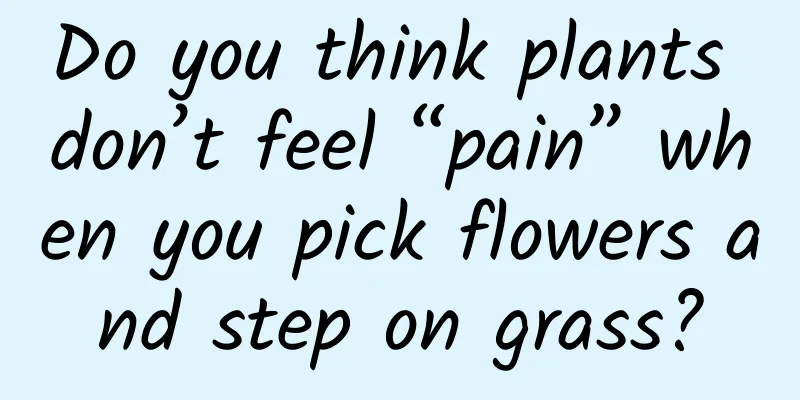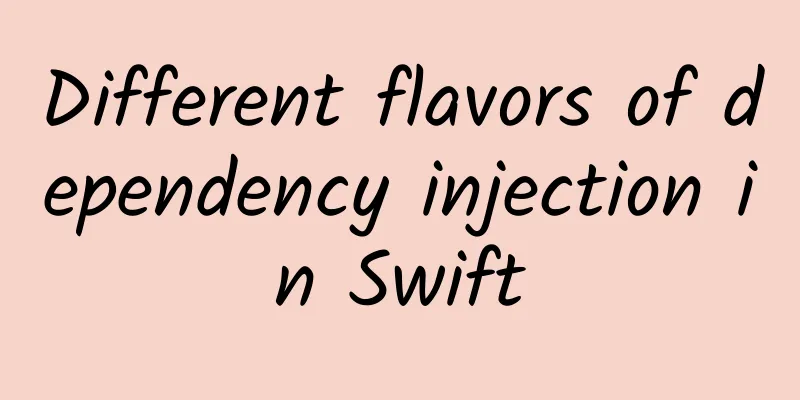Do you think plants don’t feel “pain” when you pick flowers and step on grass?

|
A news report said that scientists at Washington State University in the United States have discovered that even though plants do not have nerves, they can still sense when something touches them. Conclusion: “Plants have the sense of touch”, does that mean plants are also afraid of pain? Plant Interaction First, let's take a look at how this experiment was done: Scientists used genetic means to modify some plants so that their cells have a "pressure sensor indicator" based on calcium signals. When you touch these cells with a glass rod as thin as a hair, these indicators will show changes in calcium signals inside and between cells. The experimental results showed that when the glass rod was touched, the signal showed a slow-moving wave; when the glass rod was removed, the wave immediately became faster and dissipated quickly. The two different waves mean that the plant has two different response modes to the arrival and departure of pressure. We can also directly experience this magical interaction in our lives - the mimosa knows when you touch it and immediately closes up as if it is shy. Carnivorous plants such as the Venus flytrap can quickly turn themselves into cages to trap insects and slowly digest them, but the prerequisite is that they first sense the arrival of insects. Does this animal-like "feeling" really exist? Not really. Touch and Feel Animals need to evolve a clear sense of touch in order to adapt to the increasingly fast-paced world. Literally, the difference between animals and plants is the difference between "movement and stillness". But in the earliest days of multicellular life, animals were either fixed to the seafloor like corals, eating nutrients that drifted randomly, or drifting as plankton, without actively chasing and hunting, which is very different from the image of animals today that can run, jump, and fly. The Cambrian explosion of species changed all this. Animals acquired amazing athletic abilities, which require a full set of perceptual abilities to support them. For example, vision and hearing can sense the positions of prey and predators, and understand the offensive and defensive terrain of their environment; touch can sense the mechanical stimulation of the external environment. From then on, changes in sea water and wind passing through the body have a sense of danger, guiding the animal's central nervous system to distinguish between prey and natural enemies. Various evidences show that plants, which have been ignored by us for a long time, also have similar mechanisms. However, plants do not have a nervous system, so there is no place to process this pressure feeling, let alone summarize it as a kind of "perception". It hurts, it hurts so much! Animals even have an advanced version of touch - the sense of pain. For example, if you accidentally step on a Lego brick (mechanical stimulation), get scalded by boiling water, or lick an iron door in the northeast in winter (temperature stimulation), or eat super spicy noodles (chemical stimulation), it must be painful! This triggers the pain receptors in our body, and the peripheral nervous system sends a danger signal to the central nervous system. In this process, the wound and other parts will release a series of substances that actively induce pain, such as histamine and prostaglandins, to help this process, and eventually pass through the somatosensory area of the cerebral cortex, the anterior cingulate gyrus and the insula, and produce pain. In other words, pain is a viewpoint generated by the brain. For example, whether we humans can feel pain is even affected by our behavioral motivations, past experiences, emotional personality, family, and social and cultural background when we receive stimulation. It is not entirely an objective reflection of the injury, but a "brain supplement", in which the brain decides whether to drive your body to seek benefits and avoid harm. In addition, the pain generated by oneself can also indicate what is going on in the body: toothache and stomachache can urge us to go to the hospital quickly because we know that this is a warning from the body. Plants and animals the same? In addition to responding to mechanical pressure in a similar way to "touch", plants also have a similar "pain" response? When a plant is stimulated, such as when grass is eaten by cattle and sheep, the antioxidant system will secrete excessive amounts of superoxides such as hydrogen peroxide at its "wound". These defense signal molecules are transported in the plant body like pain factors, activating the plant's defense system. However, in this process, they do not have an internal experience of pain because they do not need to move themselves, but instead release tannins and other things that natural enemies do not like, ensuring the safety of most plants. There are still many unsolved mysteries about the pain perception of plants. For example, different plants use different substances to achieve this "diffusion of pain", but their functions seem to be similar. For example, the defense signal molecule systemin is a small molecule composed of 18 peptides. It is only found in Solanaceae plants in the natural environment, but scientists have found that it can be used in Arabidopsis thaliana of the Cruciferae family under artificial intervention. Some experiments have also shown that the calcium ion pathway mentioned above can transmit "pain" signals in addition to "touch", which is similar to animals. This may be because plant cells and animal cells are both eukaryotic cells, and some of the underlying structures between the two can also be common. But what we can be clear about is that, compared to animals with central nervous systems, the mechanism by which plants sense external stimuli is not mixed with any "perception" processed by the brain; it is still a purely mechanical reaction, which is essentially different from that of animals. Excerpted from: Inside and Outside the Classroom Junior High School Edition·Science Youth July 2023 Weekly No. 3 (Total No. 1149) Text/Code Editor/Mao Ying |
>>: How CPUs Work 6——Assembling CPUs
Recommend
24-hour emergency response | College teachers and students must provide a 48-hour nucleic acid test certificate before returning to school
Hot News TOP NEWS College teachers and students m...
How much does it cost to rent a video server with a G-port large bandwidth?
How much does it cost to rent a video server with...
For online operation and promotion, can the hit H5 that goes viral be replicated?
In the past two years, we have seen H5s produced ...
iOS 18 is coming, the biggest update ever!
Although there is still more than half a year awa...
Japan's Mount Fuji may erupt? Will it have an impact on my country?
According to a report by Japan's Jiji Press o...
This kind of delicacy is recommended all over the Internet as soon as summer comes, but I advise you not to eat it!
Summer is here, and it is the perfect season to e...
Who is the next Perfect Diary? Re-answering "Changes in Chinese Brands in 2020"!
“What has changed in our world?” 1. New brands: N...
Drive these 100,000 RMB SUVs home for the Chinese New Year and you will easily win over your mother-in-law
There are about three weeks to go before the Spri...
“FaceApp” explosive operational growth strategy!
In recent days, I believe everyone has been flood...
Are you always getting electrocuted in winter? Here are some easy tips to help you avoid static electricity!
Winter is coming Do you often experience sudden &...
Nature: Intestinal flora has a new role to play! It may protect against the harm of smoking
Feeding cesarean section babies a small amount of...
Where did these 10 problems in a programmer's career go?
[[135640]] I decided to take some time to sort th...
The mobile phone industry is highly mature, but why is it becoming more and more "boring"?
As the mobile phone market matures, more and more...
Android phone market share in the U.S. rose to 64.9% in June
[[138630]] In the early morning of July 2nd, Beij...
It's time to defend the potato! We've been so misunderstood about it...
Compiled by: Gong Zixin Potatoes are high in star...









